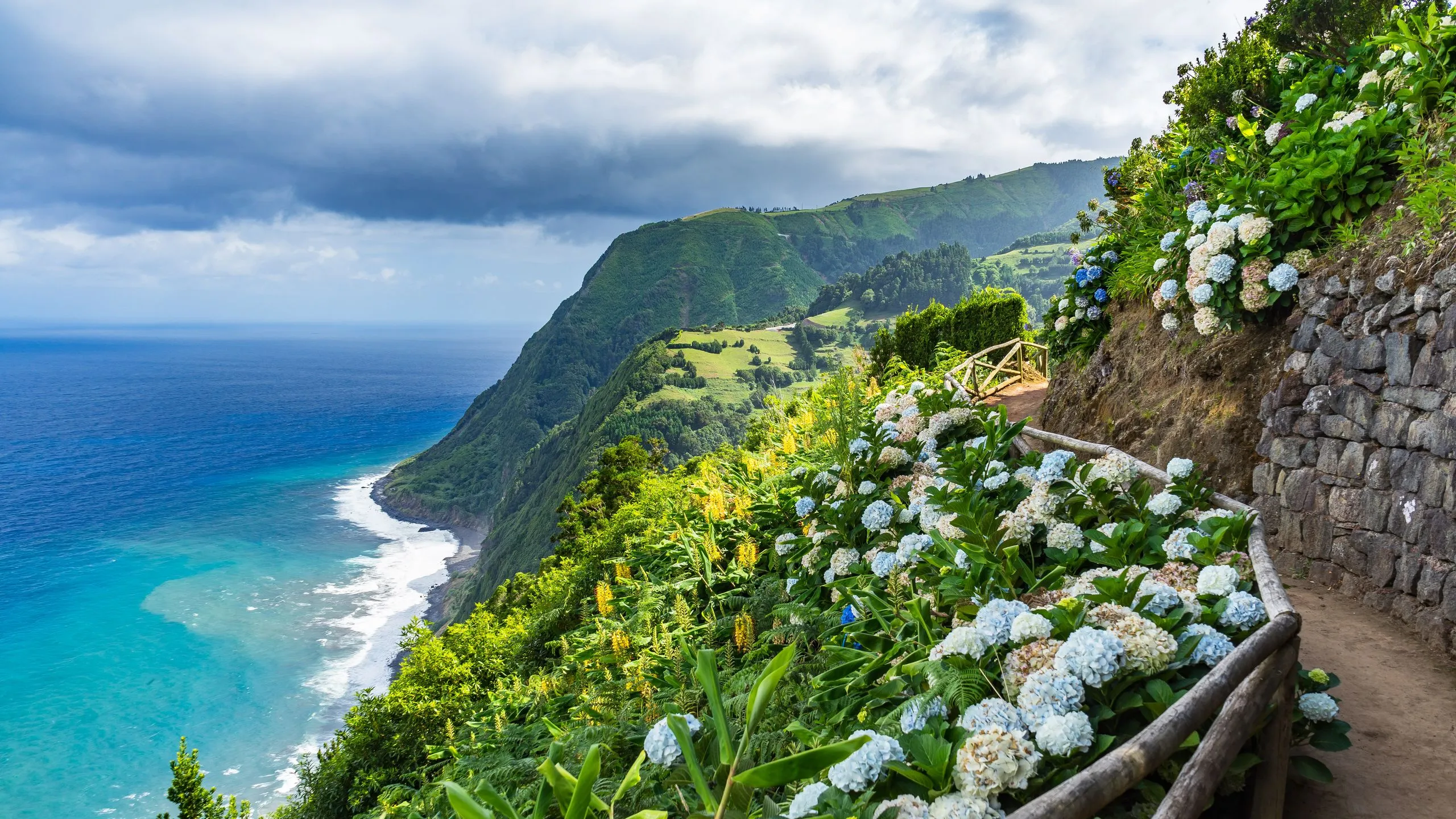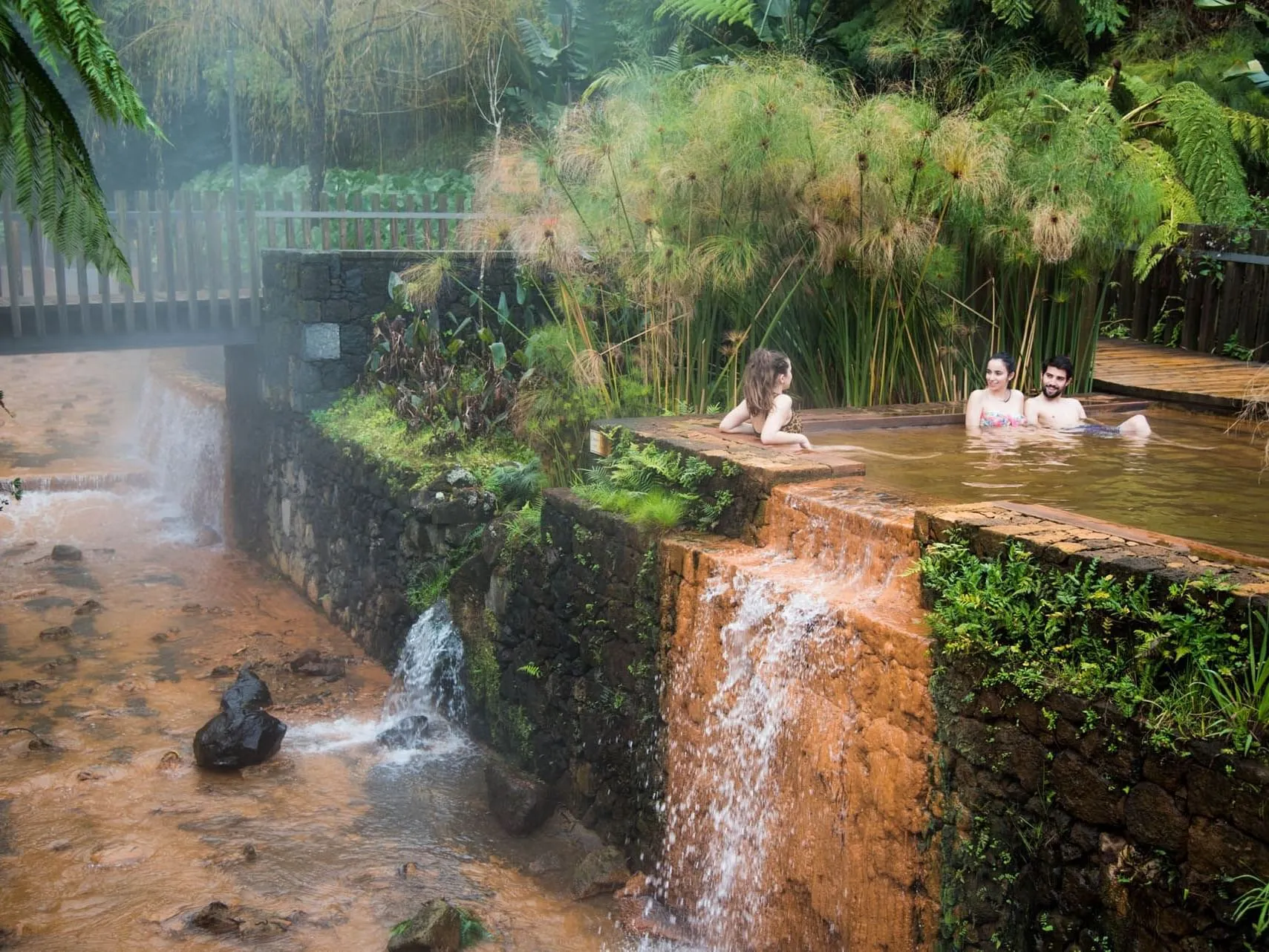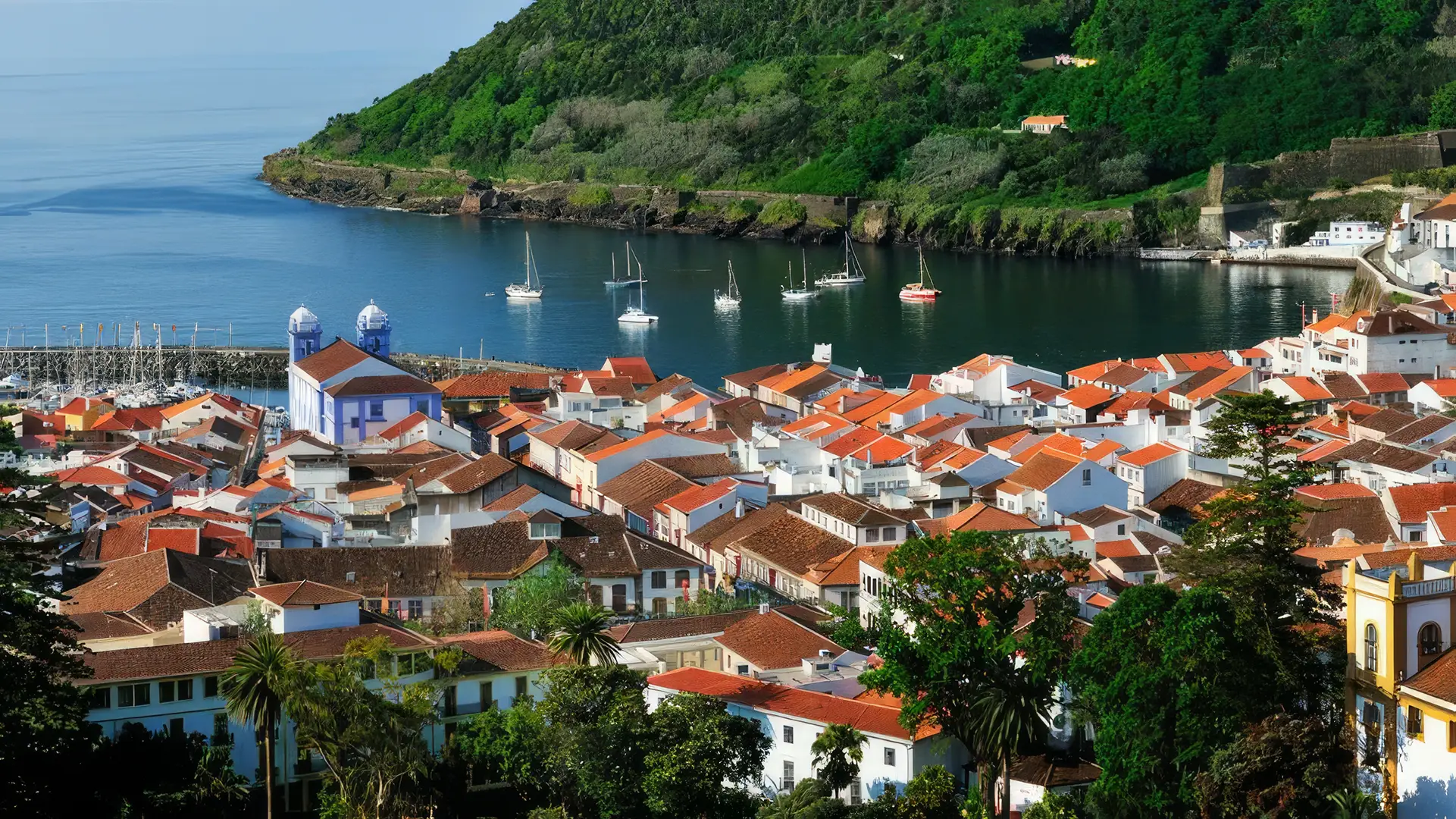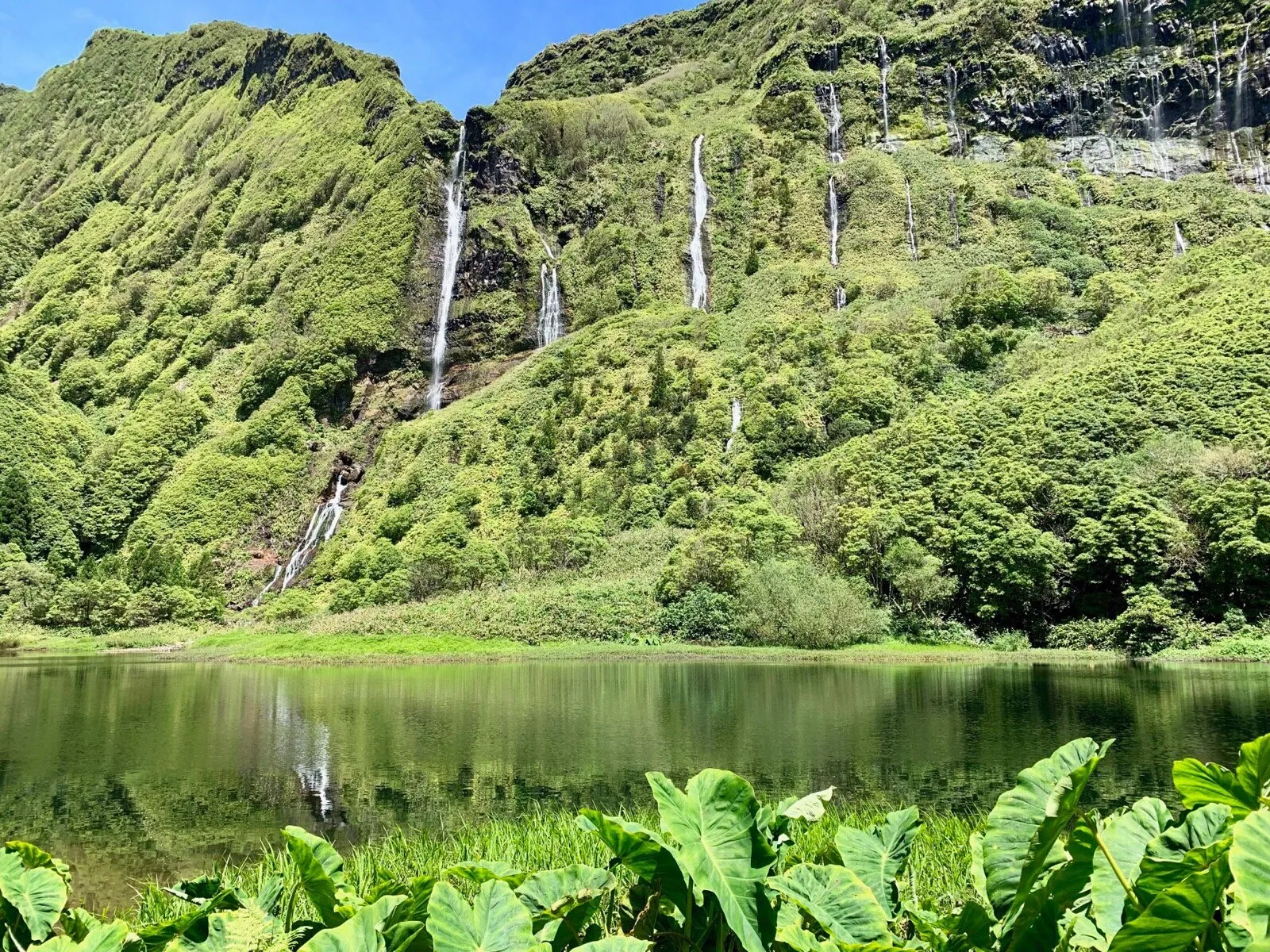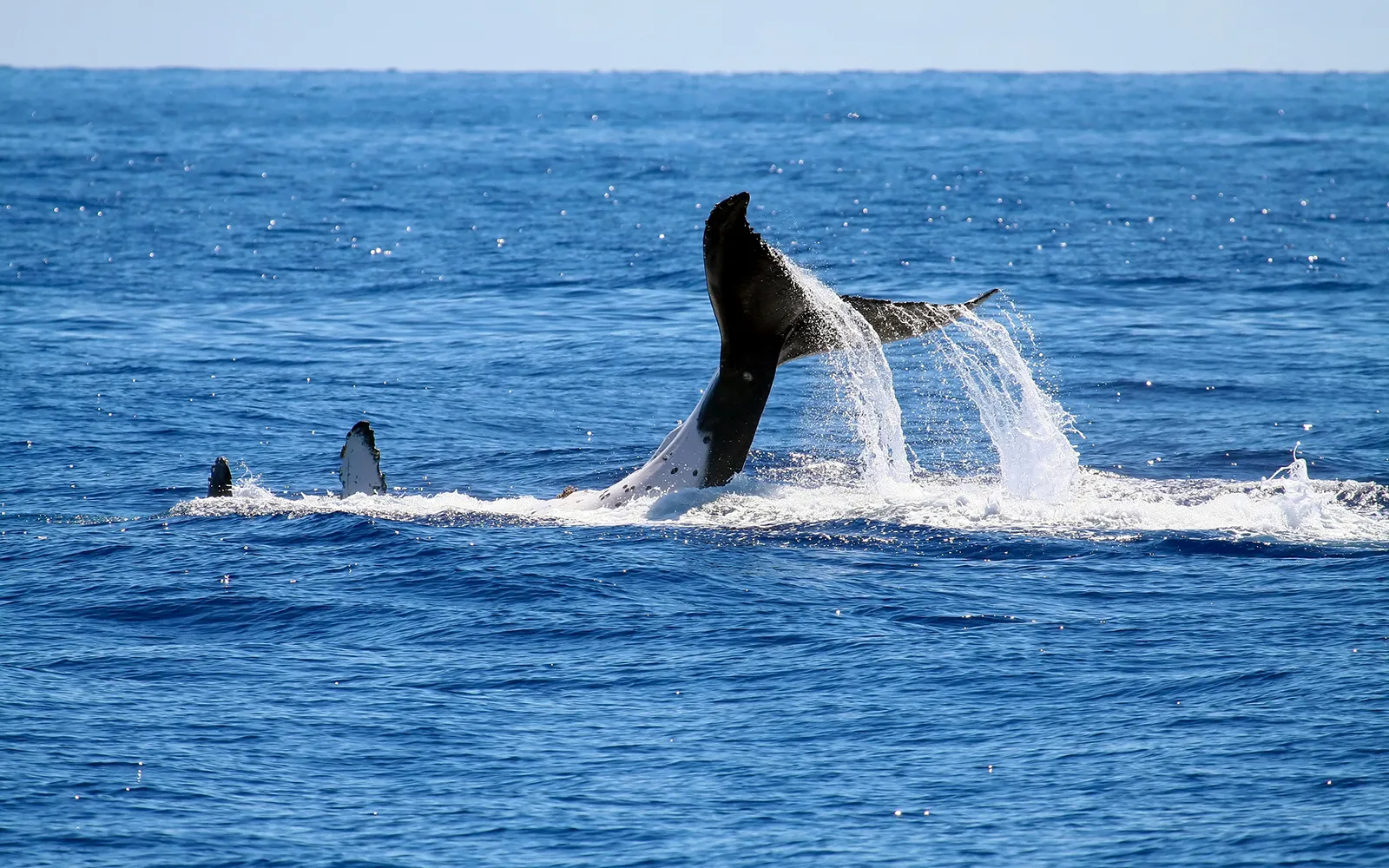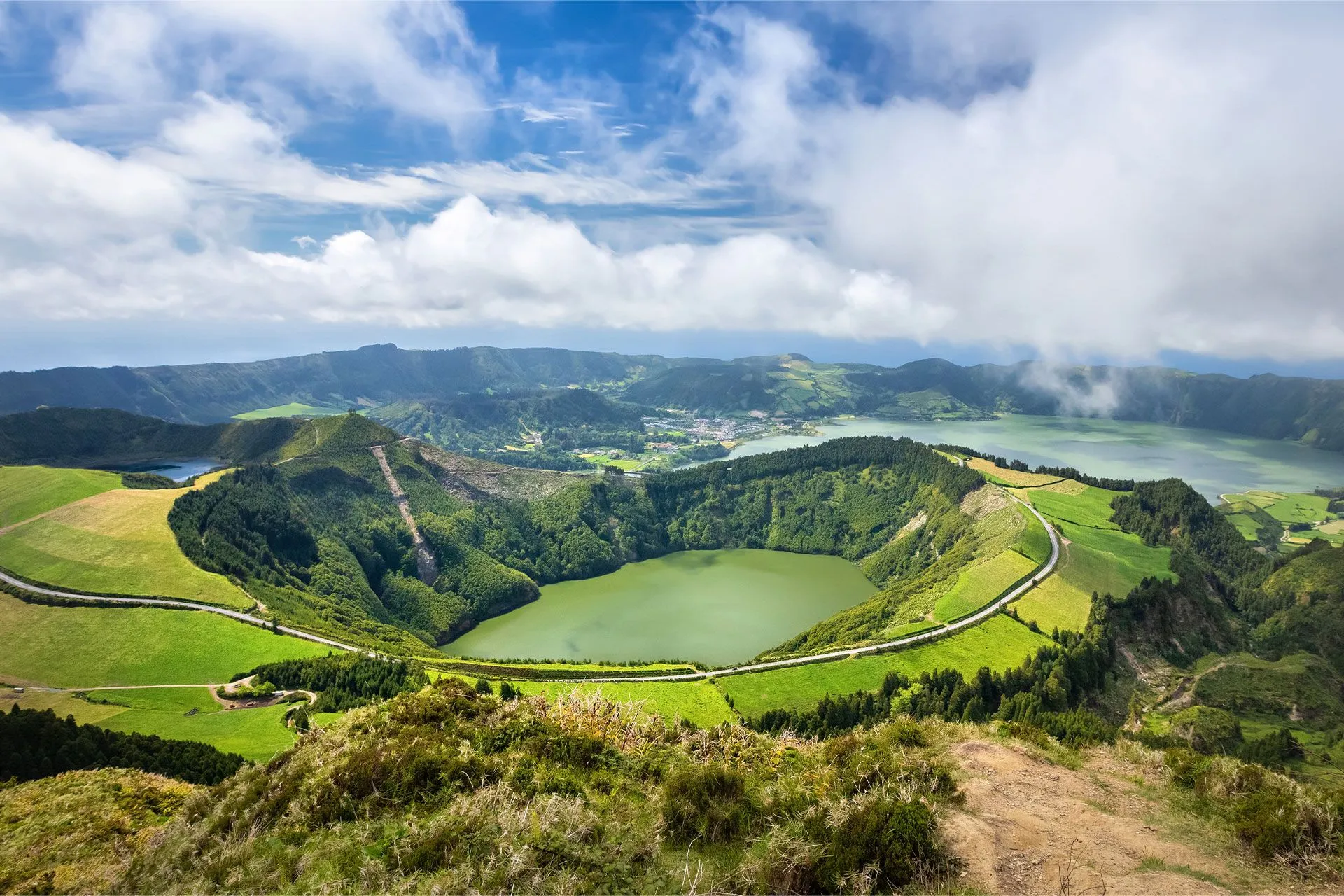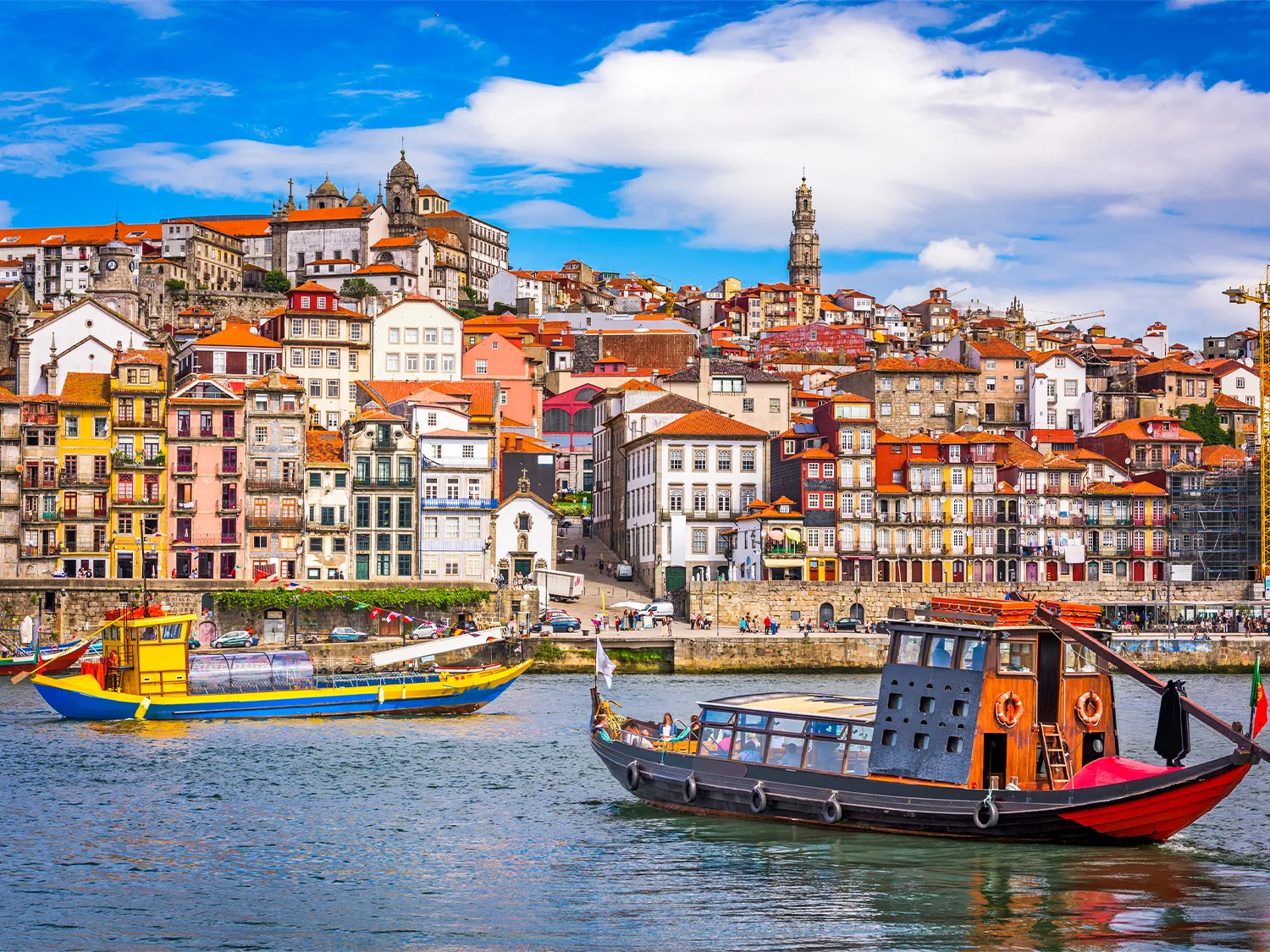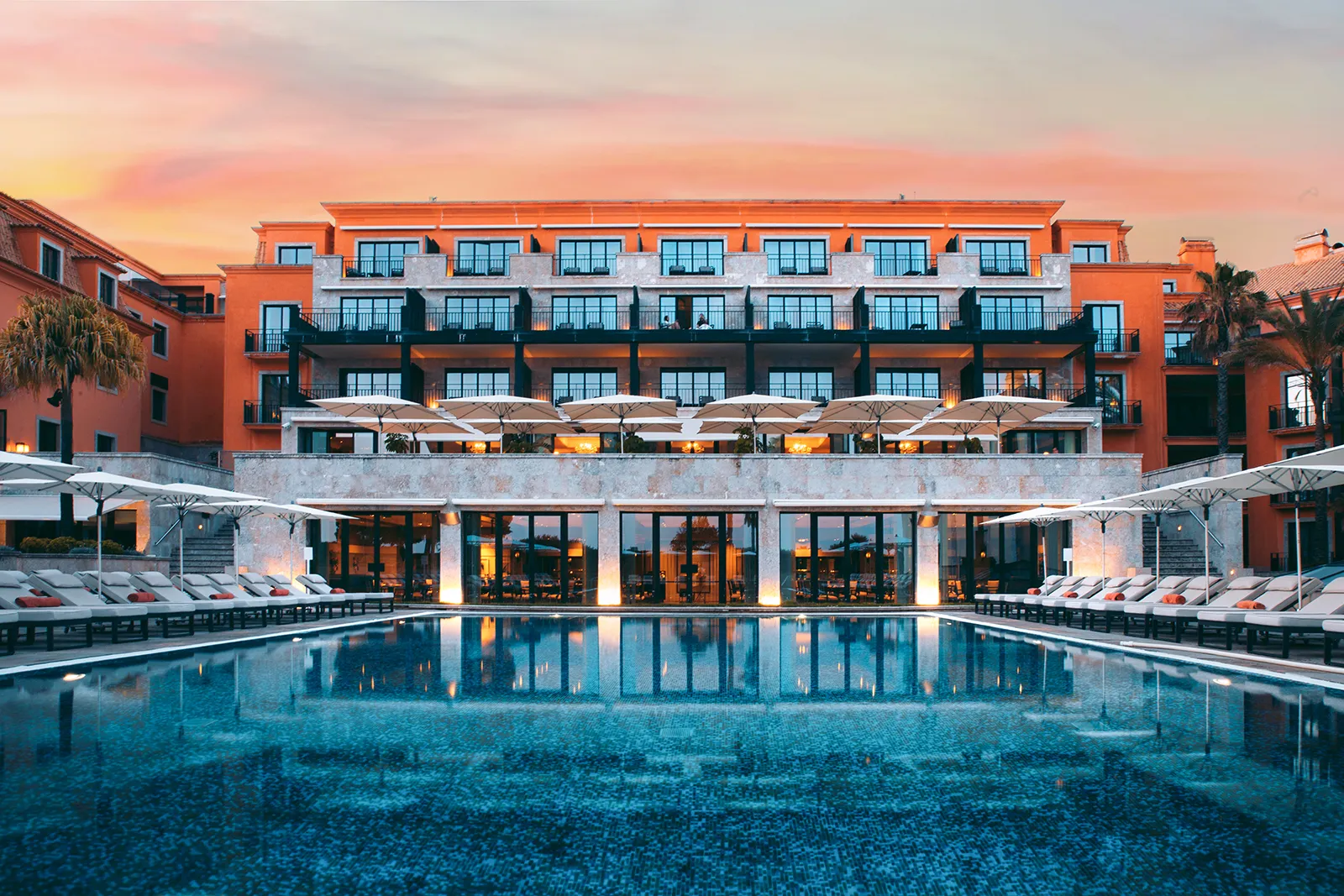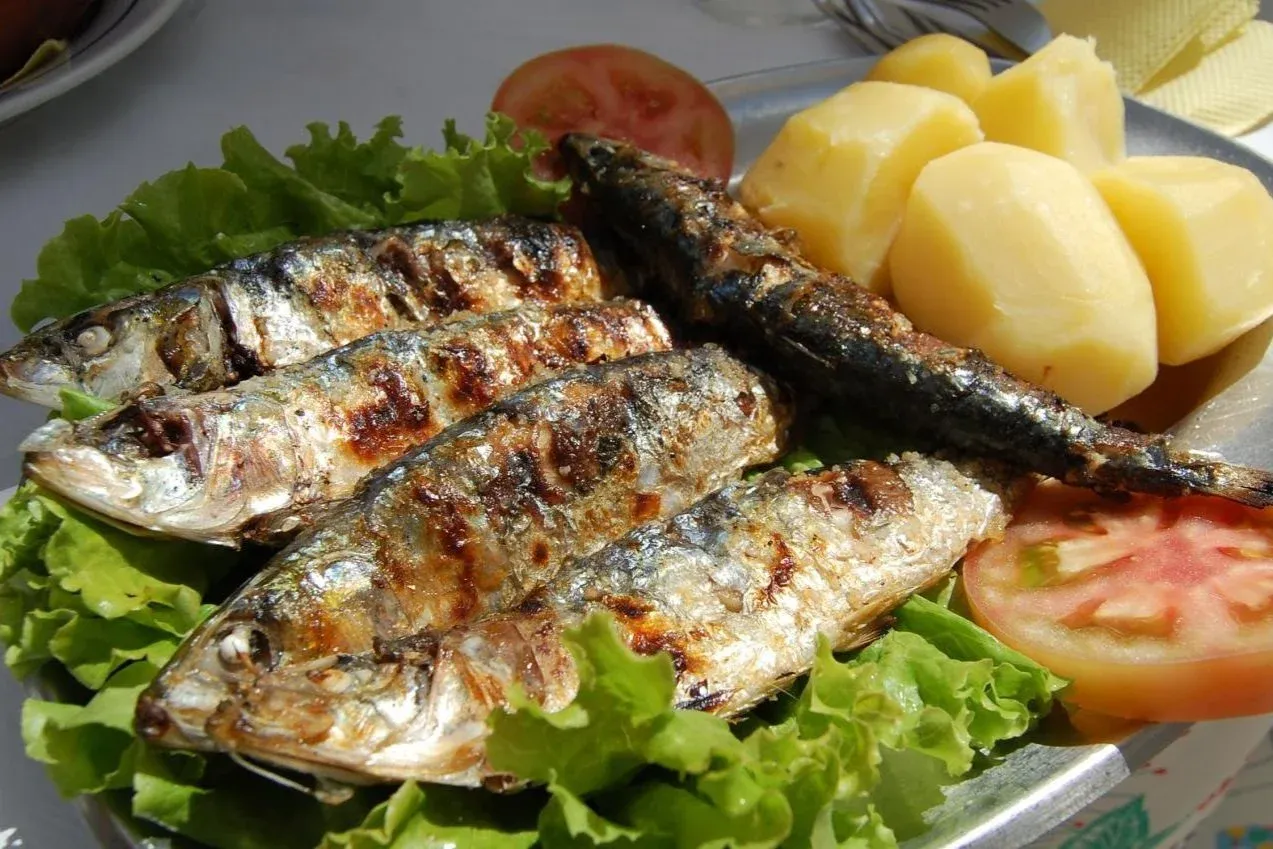The Azores are more than just a collection of beautiful islands in the middle of the Atlantic—they are Portugal’s best-kept secret, feeling both distinctly European yet otherworldly. Imagine emerald green hills sculpted by ancient volcanoes rolling into a sapphire-blue ocean, misty craters cradling pristine lakes, and natural hot springs offering a restorative soak after a long hike. This nine-island archipelago has become more accessible while fiercely holding onto its soul. A trip to Azores Portugal offers a destination that seasoned travelers whisper about in reverent tones as the “Atlantic’s best-kept secret.”
Essential Planning for Your Azores Trip
Before diving into island-hopping adventures and hidden waterfalls, let’s cover the practical foundations every first-time visitor needs. The Azores are known for their mild, maritime climate, with daytime temperatures hovering in the 60s or 70s Fahrenheit year-round, though locals joke you can experience “four seasons in one day.”
Best Time to Visit the Azores
There’s no single perfect month, as the ideal timing depends on your priorities. July and August offer the highest chance of warm, sunny days for swimming in natural pools and enjoying clear hiking views. April and May provide spectacular whale watching during the peak migration season when Blue Whales, Fin Whales, and Sei Whales pass through Azorean waters. For the sweet spot combining pleasant weather, blooming hydrangeas, and giant whale sightings, late April to early June delivers the best balance.
How Many Days Do You Need in the Azores?
The biggest mistake first-time visitors make is cramming too much into a short trip. For a focused first experience, dedicate 5 to 7 full days solely to São Miguel, the largest and most diverse island. If you’re dreaming of island hopping, plan a minimum of 10 to 14 days to comfortably experience São Miguel plus one or two other islands like adventurous Pico or historic Terceira.
Getting to the Azores from the US
It’s surprisingly easy to get here from the US East Coast, with direct 5-hour flights operating from Boston (BOS) and New York (JFK) to Ponta Delgada (PDL) on São Miguel island—making it quicker than flying to many US west coast destinations.
Which Azores Island Should You Visit?
The most critical decision when planning your trip is choosing which of the nine unique islands to visit. Each has its own distinct character, landscape, and charm, divided geographically into Eastern, Central, and Western groups.
1. São Miguel (The Green Island) – Best for First-Timers and Variety Seekers
As the largest and most populated island, São Miguel serves as the perfect introduction to the Azores, with direct international flights and the most developed tourism infrastructure. This island offers an incredible variety of iconic attractions that showcase everything the archipelago has to offer.
Top Things to Do on São Miguel:
- Sete Cidades: The iconic postcard image featuring twin blue and green lakes viewed from Miradouro da Vista do Rei, with an even more breathtaking perspective from the short hike to Miradouro da Boca do Inferno.
- Furnas Valley: A bubbling geothermal wonderland where you can witness Cozido das Furnas (stew slow-cooked by volcanic heat) and soak in iron-rich thermal pools at Terra Nostra Park.
- Lagoa do Fogo: A protected nature reserve offering the most pristine crater lake experience, with turquoise water surrounded by lush green crater walls.
- Europe’s Only Tea Plantations: Take free tours at the historic Gorreana and Porto Formoso factories with vintage machinery demonstrations and complimentary tastings.
- Pineapple Plantations: Discover unique glass greenhouse cultivation methods at Arruda Pineapple Plantation with free tours and product sampling.
São Miguel delivers overwhelming vibrancy with sparkling blue seas, endless lush greenery, and pastoral scenes of happy cows dotting rolling hills. However, its popularity means summer crowds can impact the serenity of major attractions, and accommodation prices reflect its status as the main tourist hub.
2. Pico (The Grey Island) – Best for Hikers, Adventurers, and Wine Lovers
Dramatically defined by Mount Pico, Portugal’s highest peak, this island attracts adventure seekers and wine enthusiasts drawn to its unique UNESCO-recognized wine culture born from volcanic soil.
Top Experiences on Pico:
- Mount Pico Climb: The ultimate Azorean challenge, requiring a 6-8 hour round-trip hike to reach the 7,713-foot summit with panoramic views of the central islands.
- UNESCO World Heritage Vineyards: Explore Criação Velha’s otherworldly landscape where grapevines grow in black basalt stone corrals, protecting them from wind and salt spray.
- Whale Watching: The former whaling hub of Lajes do Pico now offers some of the world’s best conservation-focused whale watching experiences.
- Gruta das Torres: Descend into one of the world’s longest lava tubes, a 5-kilometer tunnel formed by flowing magma.
Pico rewards serious hikers and wine lovers with unmatched experiences, but the challenging terrain and limited infrastructure make it less suitable for casual visitors or those with mobility limitations.
3. Terceira (The Lilac Island) – Best for History Buffs and Culture Lovers
Terceira offers the richest tapestry of history and vibrant local culture, featuring a UNESCO World Heritage city and year-round festivals that showcase authentic Azorean traditions.
Top Experiences on Terceira:
- Angra do Heroísmo: A UNESCO World Heritage Renaissance port town with colorful cobbled streets, historic forts, palaces, and churches.
- Algar do Carvão: A rare opportunity to descend into an ancient, empty volcano that leads to a crystal-clear subterranean lake.
- Serra do Cume Viewpoint: Stunning panoramic views of the island’s interior “patchwork” of green fields divided by volcanic stone walls.
Terceira excels in cultural immersion and historical significance, though it offers fewer dramatic natural attractions compared to other islands, making it ideal for travelers prioritizing heritage over adventure sports.
4. Flores and Corvo (The Western Isles) – Best for Off-the-Beaten-Path Nature Purists
The most remote and untouched islands in the archipelago are designated as a UNESCO Biosphere Reserve where nature reigns supreme with dramatic waterfalls, pristine lakes, and true isolation.
Top Experiences on Flores:
- Poço da Ribeira do Ferreiro: A hidden lagoon at the base of towering cliffs with over 20 waterfalls cascading in delicate ribbons.
- Seven Crater Lakes: Explore the island’s heart, including the famous side-by-side Lagoa Negra (Black Lake) and Lagoa Comprida (Long Lake).
- Fajã Grande: A breathtakingly beautiful coastal village nestled beneath towering cliffs with constant waterfall backdrops.
The Corvo Experience:
- Caldeirão Crater: Europe’s smallest island is dominated by its massive, perfectly formed volcanic crater, offering profound peace and isolation.
Flores and Corvo provide unmatched natural beauty and solitude but require significant travel time and expense to reach. Limited accommodation and dining options may challenge less adventurous travelers.
A Guide to Whale Watching in the Azores
The Azores consistently rank among the world’s best whale watching destinations, with over 28 species of whales and dolphins spotted in these mid-Atlantic waters that serve as a marine superhighway.
Seasonal Breakdown:
- Spring (March-May): Peak season for Blue Whales, Fin Whales, and Sei Whales during their main migration.
- Summer (June-August): Best for resident Sperm Whales and dolphin pods in calmer seas.
- Autumn (September-November): Humpback Whales on their return southern migration.
- Year-round: Common Dolphins and Bottlenose Dolphins are always present.
Best Locations: São Miguel offers the widest variety of tour operators, while Pico and Faial are considered premier locations by experts due to their deep historical ties to whaling and proximity to deep-water channels.
Choosing Your Boat: Zodiac boats provide faster, more intimate encounters low in the water but deliver bumpy, wet rides unsuitable for young children or those with back problems. Catamarans offer stable, comfortable, family-friendly experiences with better viewing platforms and amenities like restrooms.
Managing Expectations: Sightings aren’t guaranteed in the wild, though success rates often exceed 95%. The best tours emphasize conservation and follow strict guidelines regarding speed and distance. Many travelers initially focused on whales end up captivated by dolphin encounters, with massive pods leaping and playing just feet from the boat.
Azores Travel Tips for US Visitors
Getting Around the Islands
Flights with SATA Air Açores are the fastest option but can be expensive. Atlânticoline ferries offer affordable, scenic alternatives, particularly convenient within the Central Group “Triangle” (Pico, Faial, São Jorge). A hybrid approach works best—flights for longer distances between island groups and ferries for short Central Group hops.
Why Renting a Car is Essential
A rental car is absolutely essential. Public transportation is infrequent and doesn’t service the remote viewpoints, trailheads, and natural pools that are the highlights of any Azores trip. Book months in advance due to limited supply, especially during the peak summer season. Manual transmission is standard, so specify an automatic if needed and expect to pay a premium.
Accommodation Options
Accommodations range from modern luxury hotels to charming family-run guesthouses and traditional stone cottages (Adegas). On São Miguel, staying in Ponta Delgada provides convenient central access, while the Furnas Valley offers tranquil, nature-immersed experiences. Pico features unique stays in converted stone houses within UNESCO vineyards. Flores leans toward eco-lodges and restored rural homes, like the memorable Aldeia da Cuada.
What to Pack for the Azores
Packing for the Azores means preparing for famous microclimates where weather changes instantly. Pack a versatile layering system rather than for a single season.
Critical Items:
- Waterproof Rain Jacket: The single most essential item—don’t leave home without it.
- Multiple Layers: A combination of t-shirts, long-sleeved shirts, and a mid-layer fleece or sweater.
- Sturdy Waterproof Hiking Boots: Even short walks to viewpoints can be muddy and uneven.
- Old/Dark-Colored Swimsuit: Geothermal springs rich in iron will permanently stain light colors a rusty orange.
- Daypack, reusable water bottle, sunscreen, and a portable charger.
- Downloaded Offline Maps: Cell service can be unreliable in remote mountainous areas.
- Cash (Euros): Many rural cafes, shops, and taxis are cash-only.
The Azores reward visitors who come prepared for their famously unpredictable weather while remaining flexible and open to whatever natural wonders each day reveals.
The Azores represent more than stunning scenery—they’re a testament to nature’s power and artistry. This destination rewards curious travelers willing to hike muddy trails for breathtaking views or wait patiently for the fog to lift, revealing hidden lakes. This accessible, affordable corner of the world offers a rare combination of thrilling adventure and restorative peace. A visit to Azores Portugal invites you to slow down, breathe deeply, and reconnect with the natural world while helping to preserve its resilient, welcoming spirit for future generations.
Read more:
